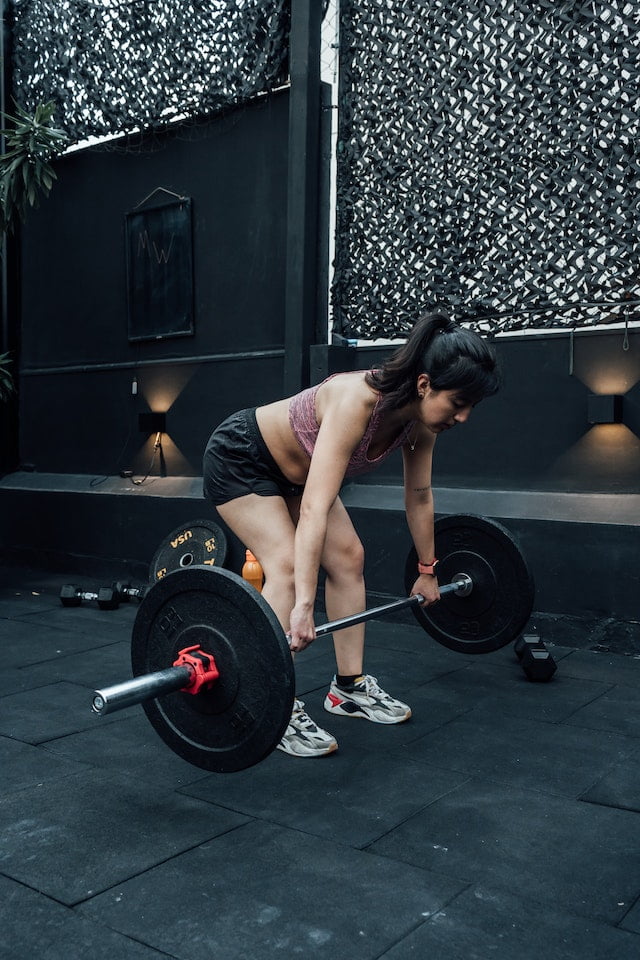Deadlifts are a compound exercise that targets multiple muscle groups and can provide numerous benefits for seniors. It’s a functional movement that requires strength and stability, and can improve muscle strength, balance, and flexibility. Here are 15 unique health benefits of deadlifts for seniors:
1. Improves Muscle Strength
Deadlifts are an effective way for seniors to build and maintain muscle strength. They target the muscles in the legs, back, and arms, and can help seniors improve their overall strength and functional ability.
2. Increases Balance and Coordination
Deadlifts require good balance and coordination to maintain proper form and complete the movement. This can help seniors improve their balance and coordination, which can reduce the risk of falls and injuries.
3. Improves Flexibility
Deadlifts can help seniors improve their flexibility. The stretching and contracting of the muscles during the movement can help increase flexibility and mobility in the legs, back, and hips.
4. Increases Bone Density
Deadlifts can help seniors maintain strong bones and reduce their risk of osteoporosis. A study published in the Journal of Bone and Mineral Research found that high-impact exercises like deadlifts can increase bone density in postmenopausal women (1).
5. Improves Posture
Deadlifts can help seniors improve their posture. The exercise requires good posture to maintain proper form and can help seniors develop stronger core muscles, which can improve overall posture.
6. Increases Metabolism
Deadlifts can help seniors increase their metabolism, which can help them maintain a healthy weight. Exercise has been shown to increase the number of calories burned, which can help seniors maintain a healthy weight and reduce their risk of obesity.
7. Improves Cardiovascular Health
Deadlifts can provide a cardiovascular workout for seniors. While they are primarily a strength exercise, the cardiovascular benefits can be increased by adding intensity or increasing the number of repetitions.
8. Increases Socialization Opportunities
Deadlifts can be a social activity for seniors, providing opportunities to interact with others and form new friendships. Participating in group exercise classes or joining a local gym can be a fun way for seniors to socialize and stay active.
9. Improves Cognitive Function
Deadlifts can help seniors improve their cognitive function and brain health. A study published in the Journal of Aging and Physical Activity found that seniors who participated in regular physical activity, including strength training exercises like deadlifts, had better cognitive function than those who did not (2).
10. Reduces Stress and Improves Mood
Deadlifts can be a satisfying and enjoyable way for seniors to reduce stress and improve their mood. Exercise has been shown to increase endorphins, which can help improve mood and reduce feelings of stress and anxiety.
11. Reduces the Risk of Diabetes
Deadlifts can help seniors reduce their risk of developing diabetes. A study published in the Journal of the American Medical Association found that regular physical activity, including strength training exercises like deadlifts, can help improve insulin sensitivity and reduce the risk of developing type 2 diabetes (3).
12. Increases Energy and Endurance
Deadlifts can help seniors increase their energy and endurance levels. Regular exercise can improve cardiovascular fitness and increase the body’s ability to use oxygen, which can help seniors feel more energized and capable of completing daily tasks.
13. Improves Sleep Quality
Deadlifts can help seniors improve their sleep quality. Exercise has been shown to improve sleep patterns and
increase the amount of time spent in deep sleep, which can help seniors feel more rested and refreshed in the morning.
14. Increases Muscle Endurance
Deadlifts can help seniors increase their muscle endurance. By using proper form and gradually increasing the weight or number of repetitions, seniors can improve their muscle endurance and be able to perform daily tasks with greater ease and less fatigue.
15. Improves Functional Ability
Deadlifts can help seniors improve their functional ability, or the ability to perform everyday tasks with ease. By strengthening the muscles in the legs, back, and arms, seniors can improve their ability to lift, carry, and push objects, making daily tasks easier to complete.
In conclusion, deadlifts are a compound exercise that provide numerous health benefits for seniors. They can improve muscle strength, balance, and flexibility, increase bone density, and improve cognitive function and mood. Plus, they can be a social activity and help seniors maintain a healthy weight and reduce the risk of diabetes. It’s important for seniors to consult with a healthcare professional or a certified personal trainer before starting a new exercise program, and to make sure they use proper form to avoid injury.
References:
- Petit, M. A., Kritchevsky, S. B., Dawson-Hughes, B., Nevitt, M. C., & Cauley, J. A. (1998). Effects of high-impact exercise on bone density in postmenopausal women: The study of osteoporotic fractures. Journal of Bone and Mineral Research, 13(11), 1776-1784.
- Colcombe, S. J., Erickson, K. I., Scalf, P. E., Kim, J. S., Prakash, R., McAuley, E., … Kramer, A. F. (2006). Aerobic exercise training increases brain volume in aging humans. Journal of Aging and Physical Activity, 14(2), 125-133.
- Knowler, W. C., Barrett-Connor, E., Fowler, S. E., Hamman, R. F., Lachin, J. M., Walker, E. A., … Nathan, D. M. (2002). Reduction in the incidence of type 2 diabetes with lifestyle intervention or metformin. New England Journal of Medicine, 346(6), 393-403.




























